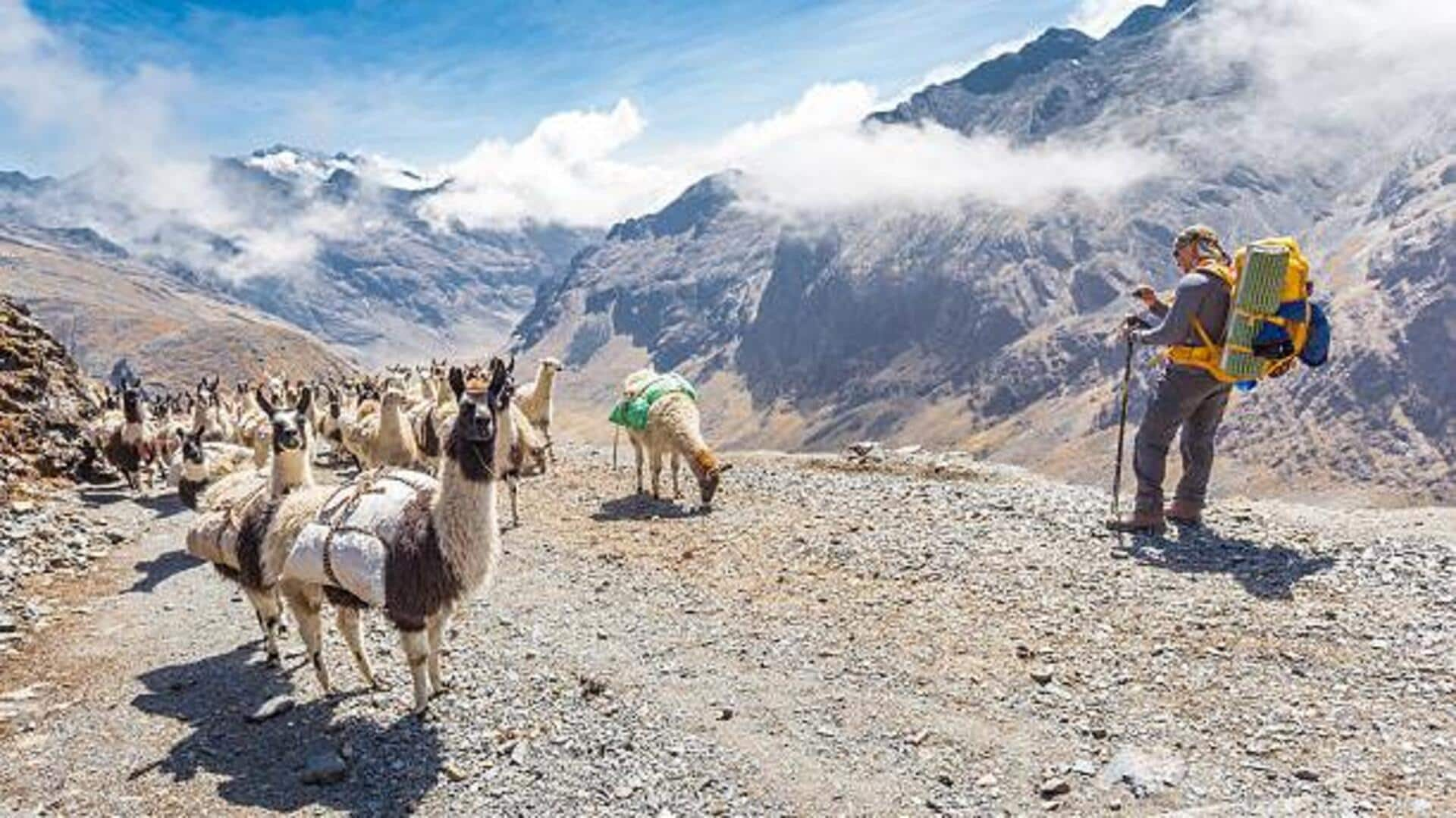
Llama trekking: The perfect way to explore the Andes
What's the story
Trekking with llamas in the Andes is an exceptional way to explore the gorgeous alpine landscapes of South America. These gentle animals have been utilized for centuries by indigenous people for transportation and carrying goods across difficult terrains. Today, they offer trekkers an eco-friendly and entertaining way to soak in the stunning beauty of the Andes. Here's all about llama trekking.
Llama traits
Understanding llama behavior
Llamas are calm and sure-footed, which makes them the perfect trekking companions in mountains. They can carry up to 25% of their body weight, which is generally around 50 pounds. This way, you can enjoy your trek without worrying about heavy bags. Learning llama behavior is important; they communicate through their body and voice, which helps build a rapport during treks.
Trek preparation
Preparing for your trek
Before you head out on a llama trek, be sure to prepare well. Trekkers should carry clothing suitable for changing weather conditions in alpine conditions. It is also important to get properly acclimatized to avoid altitude sickness, as most trails rise above 10,000 feet. Interacting with local guides who are well-versed with llamas and the terrain can ensure your safety and make it worthwhile.
Trail selection
Choosing suitable trails
The Andes provide an array of trails for all skills and interests. Some famous routes are those surrounding Machu Picchu or in national parks like Peru's Huascaran National Park or Chile's Torres del Paine National Park. While choosing a trail, consider aspects such as distance, elevation gain, scenery diversity, and cultural sites you can see on the way.
Eco-trekking advantages
Benefits of eco-friendly trekking
Trekking with llamas also encourages sustainable tourism practices by reducing our carbon footprint, especially when compared to other motorized means of transport. Llamas have soft padded feet that do less damage to trails than hooves/wheels. Using llamas also cuts down on fossil fuels while helping local economies by hiring guides from nearby communities that care deeply about preserving natural habitats.